|
|
|||
THIS WEEK at HILTON POND
1-14 August 2006
Installment #324---Visitor #
(Back to Preceding Week; on to Next Week)
|
|
|
EARLY AUGUST COMPOSITES
When early August arrives at Hilton Pond Center, our trees and shrubs have unfurled about all the leaves they will produce for the current growing season, so right now we're blessed with our yearly maximum of shade. A walk down most of our sylvan trails is pleasant even when the noontime sun is high; we're more than a little grateful for the canopy of green overhead. The big disadvantage of shady trees is they block out so much sunlight that lots of ground-dwelling forbs and wildflowers can no longer make a living, and many wither and fade away until next spring when still-leafless trees allow essential sunlight to strike the forest floor. Right now, however, any plant with blooms is almost certain to be growing out in the open--either on roadsides or exposed pond margins or within one of the mini-meadows we maintain around the Center. In such situations, odds are the flowering plant is one of our "early August composites."
All text & photos © Hilton Pond Center A composite is a plant whose flower is roughly star-shaped (hence the in-vogue family name "Asteraceae"), and whose blossom is actually made of two different kinds of flowers (hence the old, out-of-fashion family name "Compositae"). There's little doubt the Oxeye Daisy, Chrysanthemum leucanthemum (above), qualifies as star-shaped, but we have to look a bit closer to see that it has actually bears two different flower types.
In a daisy, the white loves-me-loves-me-not "petals" are actually one of the flower types--inch-long sterile "ray flowers" unable to produce seed but that serve the valuable function of advertising the flower head and attracting potential pollinators. Some ray flowers even have ultraviolet lines--invisible to us humans but quite obvious to insects; these so-called "bee guides" point the pollinator toward a dense array of "disk flowers," the reproductive part of the inflorescence at the center of the flower head. A close view will show an Oxeye Daisy's one-inch central disk is made of hundreds of these disk flowers (above, some unopened), each less than one-sixty-fourth of an inch wide and made up of miniscule petals, pollen-producing stamens, and a pistil (6:1 photomicrograph below).
One composite flower many folks mistake for Oxeye Daisy is Daisy Fleabane, Erigeron sp. (below), which is only about three-fourths of an inch across and with many more ray flowers than a true daisy. This relatively common roadside and meadow plant--there are half a dozen species in the Carolinas--has ray flowers that vary in hue from pure white to pale pink to dark lavender. Some individuals are more shade-tolerant and--in our experience--tend to have more intense coloration, but no matter the color there's no doubt all are composites.
Many composites have long, tall stems (below) that put their flowers above the surrounding grass and make them more visible to pollinators. Bees, wasps, flies, beetles, true bugs, and a variety of other insects are attracted to the long,
It's interesting the majority of composites are either white or yellow, perhaps because these colors show up well against green vegetation in a mid-summer field. (Composite flowers are seldom red, we think because this pigment fades rapidly in direct sunlight.) Unfortunately, since quite a few of these white or yellow flowers are also quite similar in size and structure, identifying composites is the bane of wildflower enthusiasts. It takes a truly dedicated botanist with lots of available time to determine the species of the so-called DWCs and DYCs--"darned white composites" or "darned yellow composites." Sometimes the ID can't even be made without waiting for seeds and/or digging up rootstock. (Note: Because composites are so frustrating, many botanists use a stronger word than "darned" as part of DYC and DWC, but here at Hilton Pond" we strive to be family-friendly and leave the more flagrant term to the reader's imagination.)
Composites do come in hue other than white or yellow, of course, as shown by several Carolina species of Elephant's-Foot, Elephantopus sp. (above). This native wildflower is doing well at Hilton Pond Center, where stems with pale purplish flowers rise from broad, flat leaves that give the plant both its common and scientific names. One curious asopect of this particular composite is that an Elephant's-Foot flower head is made up entirely of disk flowers, each only about an eighth of an inch tall.
Although composite flowers such as those around Hilton Pond this August are indeed diverse, when most folks think about composites, they think about sunflowers--the quintessential composite with a huge central disk that produces seeds we use to attract songbirds to our feeders. Those particular sunflowers are undoubtedly hybrids bred and refined for maximum seed production, but a plethora of smaller native sunflowers can be found throughout the Carolina Piedmont. Unfortunately, most of these are DYCs, so we haven't a clue as to the species of the roadside sunflower pictured above. Fortunately, we still have a few late-blooming Oxeye Daisies left over from their usual spring/early summer flourish, so these, the Elephant's-Foot, and Daisy Fleabane keep us from feeling completely inept at Hilton Pond Center when it comes to identifying DWCs and a few other early August composites.
All text & photos © Hilton Pond Center Hummingbird Mornings 2006
For the first time, Hummingbird Mornings programming goes to Gibson Park in High Point NC, hosted by Liz & Tom Schmid of the Wild Birds Unlimited store. On Saturday, 19 August 2006 we'll have two 90-minute presentations at 8 and 10:30 a.m., both of which are free and open to the public. We'll capture and band live Ruby-throated Hummingbirds and share lots of interesting info about hummingbird natural history and how to attract these amazing little creatures to your own backyard. Admission is free, but advance registration is required. Details and directions at Hummingbird Mornings. Comments or questions about this week's installment?
Thanks to the following fine folks for recent gifts in support of Hilton Pond Center for Piedmont Natural History and/or Operation RubyThroat: The Hummingbird Project. Your contributions allow us to continue writing, photographing, and sharing "This Week at Hilton Pond." (See Support if you'd like to make a gift of your own.)
"This Week at Hilton Pond" is written & photographed You may wish to consult our Index of all nature topics covered since February 2000. You can also use our on-line Hilton Pond Search Engine at the bottom of this page. For a free, non-fattening, on-line subscription to |

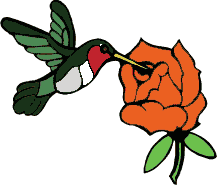 HUMMINGBIRD
HUMMINGBIRD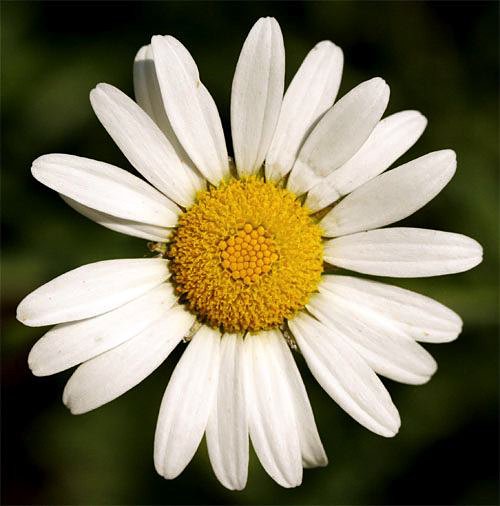
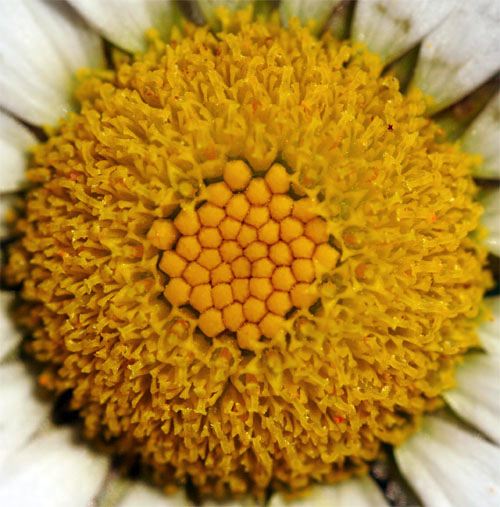
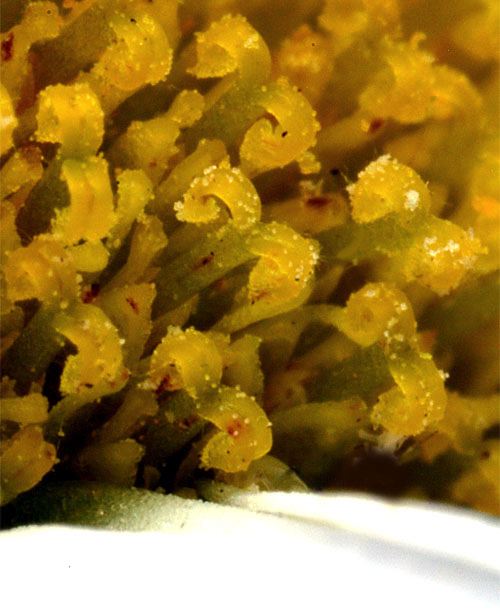
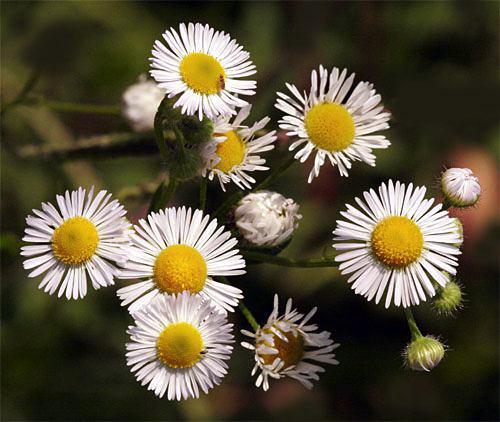
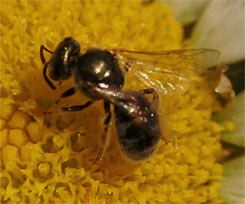 showy ray flowers and alight on them before moving to sample nectar from the central disk. A composite's ray and disk flowers often combine to form a large, round platform, as illustrated below, where pollinators seek nectar and even find mates. Insect visitors should beware, however, since Flower Spiders often lie in wait to ambush and kill unsuspecting prey before sucking them dry of their nutritious bodily fluids. We even once found a six-inch Carolina Anole lizard hiding on a composite flower stalk, no doubt in anticipation of some juicy insect luncheon fare.
showy ray flowers and alight on them before moving to sample nectar from the central disk. A composite's ray and disk flowers often combine to form a large, round platform, as illustrated below, where pollinators seek nectar and even find mates. Insect visitors should beware, however, since Flower Spiders often lie in wait to ambush and kill unsuspecting prey before sucking them dry of their nutritious bodily fluids. We even once found a six-inch Carolina Anole lizard hiding on a composite flower stalk, no doubt in anticipation of some juicy insect luncheon fare.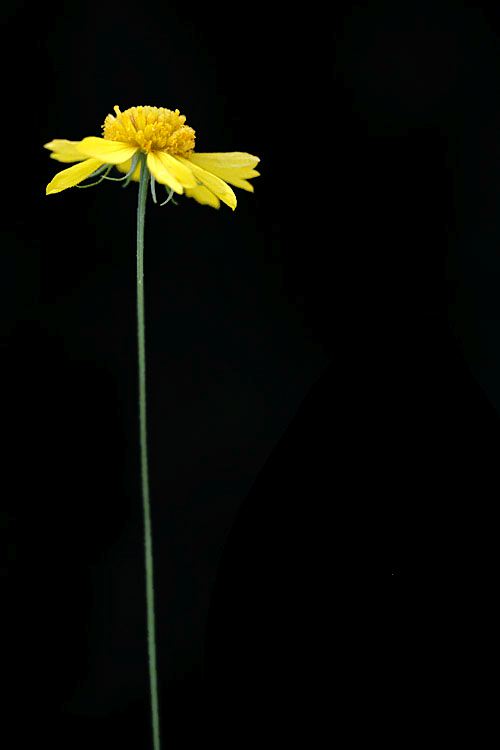
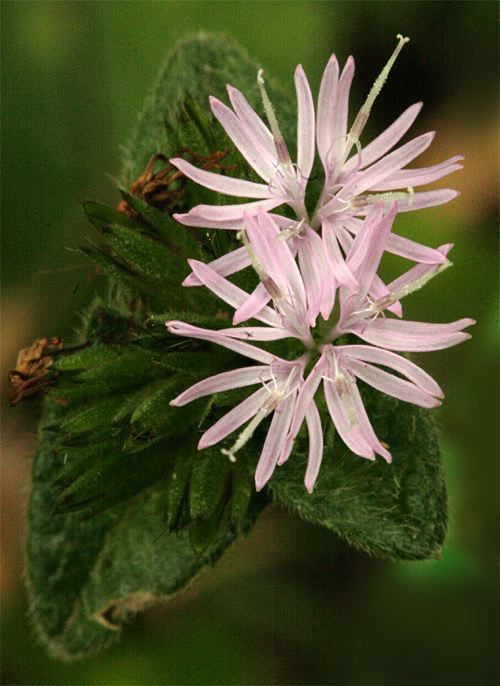
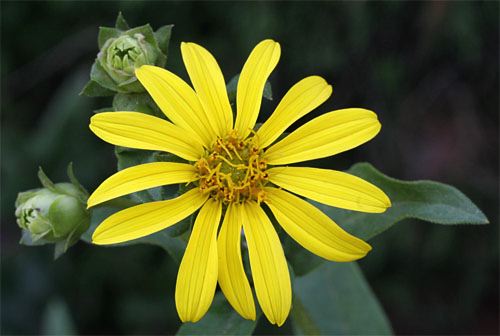


 Please report your
Please report your
